BMW iDisruption
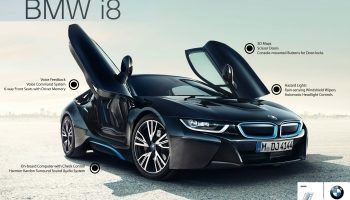
This post discusses the disruptions BMW eletric car series bring to its traditional operating model.
Climate change introduces profound disruptions to the business models of every member in the automotive industry today. For the past 100 years at BMW, the senior management’s daily decision makings have been centered around creating innovative car models and providing outstanding customer services to secure our leading position as the successful German car maker that keeps “shaping the mobility of the future”. Yet, today, “shaping the future” no more means merely to hit our sales target in the conventional fuel-powered luxury car segment, but to expand the corporate mission to developing the new vehicles that produce lower emissions and offer better fuel economy. To successfully achieve the goal of cutting emissions in half by 2020 by offering electromobility in all segments, BMW is breaking out from its comfort zone and take certain risks in tapping into new technology and business areas, driven by the increasing popularity of electric vehicles.
Car Frame of i8: Reduced Parts
In electromobility market landscape, technical challenges exist and so do the sales pressure imposed by strong competitors. What we need to appreciate here is that electric cars are not merely about cutting down on emissions. The shift to electric power transmission fundamentally changes the mechanical complexity of the car. The number of moving parts is reduced drastically, as the drive shaft, fuel tanks, transmission, and internal combustion engines are all removed. This reduced complexity means that the sophistication required to build and design cars changes, which in turn changes how they are built and thus the whole operating model of the production line. BMW’s own electric/hybrid car drive system, called “eDrive”, comprises the electric motor, power electronics, e-transmission and high voltage battery system, with the battery system being the “heart and soul” of the whole vehicle. BMW’s electric/hybrid vehicles strive to continue the company’s traditional value proposition as being “the ultimate driving machine”—all components are optimized to produce the feeling and sound that are equivalent to the intimate experience of driving a gasoline-powered vehicle. This superior driving performance is accompanied by a high price tag; BMW’s electric/hybrid line i-series starts at $42,400, with its latest model i8 costing from $140,700.
The Release of BMW i8
The luxury vehicle market, including both the fuel-powered and the electric-powered, mainly include global players including Audi, BMW, Mercedes-Benz, Lexus and Tesla. The sector in total generates about 5.7-6.5 million unit sales per year for a total revenue of $245 billion. That means that the average price of a vehicle in this segment is around $43,500 at most. It is clear that BMW needs outstanding interactive software to justify its pricing position for its i-series. Surprising, the software development is outpaced by its hardware in any BMW’s electrical/hybrid vehicle. Though proudly claimed as the “most advanced driving software in the auto industry”, BMW’s iDrive system has been reportedly criticized by its drivers as “hard to navigate”, while its navigation system has been increasingly criticized by a significant population of buyers. “I would rather find the route using my own sense of direction than opening this little screen and wait for it to turn on” said by a loyal BMW client during a driver satisfaction research that represented the voices of many. Outside BMW, luxury car makers are competing to add their own software capabilities, with Tesla being the most competitive. Supported by substantial amount of fund raised from investors and the American spirit of continuously introducing software breakthroughs on all levels, Tesla distinguished itself from other sustainable vehicles through its extremely advanced and driver-friendly software. It has been brought to the management’s attention at BMW that the company need to make deliberate efforts to instill “disruptive” thought process into its corporate culture when it comes to iDrive’s design.
BMW iDrive Software Technology
Electric car business is also unique in the way that it not only has to manufacture and sell cars, it also needs to popularize the power restore technology on which its cars operate in order to sell them. This requires BMW to build out a network of charging stations to allow i-series owners greater range in their travels. To achieve this, BMW has mapped out its expansive charging network, called “ChargeNow”, on 5 continents around the globe. These stations partner with charge point operators allow drivers to charge his/her vehicle and receive just one monthly bill.
Another important after-sale component that introduces revenue streams for the company is the dealing with used eDrive batteries that have degraded too much for continued use in electric cars. By turning used eDrive batteries into home energy storage units, appropriately called “repurpose batteries”, not only has BMW created a sustainable energy lifestyle for urban residents but also expanded the operating model’s revenue generation capabilities.
Overall, to compete for the market share of electric cars, make significant incremental improvements and tweaks to the traditional way in which cars are made, sold and serviced is extremely important to any luxury car makers. BMW relies on in-house developments not only for eDrive but also its expensive procedures ranging from stamping to robotically operating welding machines. I consider it reasonable to recommend that the manufacturing of the welding, stamping, interiors and the infomatic systems inside cars get gradually modularized and outsourced in the future, just in the way the other electronic products outsources parts of their manufacturing processes.
The next thing I recommend is to increase its innovation power in the iDrive software development. I believe in the long run, the profitability of any electric car business depends on the capability of its software technology. In the traditional era, software need to be updated inside physical shop and many customers opt for ignoring updates because of their busy daily schedules. Traditionally, new model launches and model refreshments are the only known drivers of strong revenues . Typicaly, automakers upgrade a car model with new features every two to three years before changing the model in about eight to ten years. However, in the era of electric cars, the reduced number of moving parts introduced the potential ability to ship refreshes and updates directly through its software via connected network. Given the increased mechanical simplicity of an electric car structure, the sophistication and capabilities of its software technology can be extensive. In fact, I see software technology as the main selling point of the future electric car industry.
References:
- BMW intranet, Design Process of i-Series, Cited November 4th, 2018
- BMW Intranet, Repurpose Battery Grid Installation, Cited November 4th 2018
- BMW Intranet, 2015 Driver Satisfaction Report, Cited November 4th, 2018
- BMW Sustainability Report 2015, Cited November 4th, 2018
- BMW Charging Station, http://www.shopbmwusa.com/PRODUCT/4648/BMW-CHARGING-STATION, cited November 4th, 2018


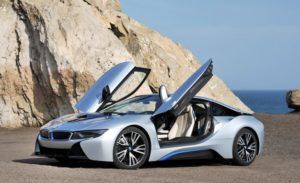
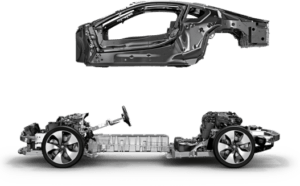

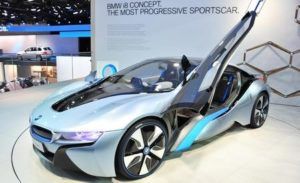
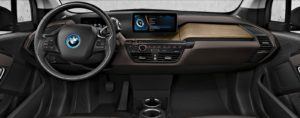
While BMW’s electric car series is contributing to a shift towards sustainable transportation globally (at least for high-end, luxury users), I would argue that there needs to be greater collaboration between BMW and other luxury vehicle makers, such as Tesla, to educate the market about electric vehicles and increase availability of power restore technology. The author of this post highlights that BMW is building upon its ChargeNow network. Instead of expanding its own network, I would instead advocate that BMW should be working with other electric vehicle makers to create a standard electric vehicle car charging station, that all vehicle makers are installing around the globe. I see this as a way to increase market share of electric vehicles generally as a product category (i.e., make the entire pie bigger which BMW will also benefit from).
One question that I would like to pose is to what extent luxury can be a driver of sustainability. You mention that: “This superior driving performance is accompanied by a high price tag; BMW’s electric/hybrid line i-series starts at $42,400, with its latest model i8 costing from $140,700.” It seems that not that many people may be able to afford these cars thus limiting the real impact that a company like BMW may have in helping fight climate change. Perhaps the answer to this question is that luxury sets the standard for the rest of the industry, and other car companies will be more compelled to follow in their footsteps regarding sustainability as a result. In other words, if consumers aspire to Tesla/i8 BMW models, this might fundamentally shift the emphasis other carmakers place on investing in innovation regarding sustainability. If this is the case, your recommendation to invest in perfecting their software for their own models makes sense. However, I agree with PThatai’s view that BMW could take a more proactive approach towards increasing the market share of electric vehicles more generally by focusing on initiatives that go beyond the company’s own targets. Additionally, aligning the brand’s image with eco-friendly initiatives though leadership at an industry-wide level may also be beneficial for BMW from a marketing perspective.
While I agree that software is likely to be the value-adding component for the industry as whole and the subsequent wide adoption of electric cars, I remain doubtful if it is the best strategy for BMW. As Jessica mentioned, the internal development of iDrive software development lags hardware development. It is evidence that software development may not play to the core competence of BMW or traditional car manufacturer. It is my opinion that BMW should form strategic partnership with software firms to co-develop next generation electric cars instead of building everything in house. In addition, BMW faces challenges allocating resources between developing cleaner gasoline cars which can generate immediate impact, and building electric cars in a market that yet to ramp up. It has been proven extremely difficult and sometimes costly when a car company tries to balance performance and social impact with the most recent episode of Volkswagen scandal.
Very interesting post Jessica!
I think that BMW is doing some really innovative things relative to it’s competitors (e.g., wind powering/ hydropowering the plants where i series is assembled) to have a positive effect on the environment. It is interesting to consider the all in effect of electric vehicles more broadly, and how it may affect BMW (and other e-car manufacturers’) marketing of their lines. There are a few interesting studies that show the impact of electric powered vehicles may actually be more harmful than gas powered in specific geographies over the near term — the underlying rationale being that the energy generation mechanism (e.g., coal) used to create the electricity necessary to move an e-car 1 mile may emit more GHG than a traditional car emits in 1 mile (see Atlantic study below). Some folks have even gone so far as to argue that a tax should be placed on e-cars in geographies where the net effect is worse than driving a gas powered car. I think there could be a lot of opportunity for BMW to partner with other e-car makers to ensure there recharging infrasturcture is powered by green sources — could be excellent marketing, as well as a great way to hedge against any policy changes requiring taxation of vehicles based on energy consumed.
http://www.citylab.com/weather/2015/06/where-electric-vehicles-actually-cause-more-pollution-than-gas-cars/397136/
Thanks for your article. I liked it a lot! In the one hand, it is amazing to read that BMW is working hard to offer electric-powered options in all the segments in which it competes. As BMW lover, I think this move is great as the company will be able to compete in a growing segment while reducing complexity in production lines (as you mention, many parts of the car are actually removed) and generating less impact in the environment. In the other hand, I still think that BMW, and the rest of auto manufacturers, have to work harder to bring electronic-powered cars closer to the entire population. By closer, I mean having cheap options for low income consumers. On average, one car with this technology costs $43,500 dollars which is unaffordable for a big part of the population. In my opinion, electric-powered cars are currently a luxury item rather than a car. There is a lot of work pending to be done to change this a create a real and meaningful impact in the world.
Great article. Just as the iPhone destroyed the Blackberry, I wonder what the electronic driverless car could destroy – Uber, car parks, Deliveroo, Ocado, Instacart… the list is endless.